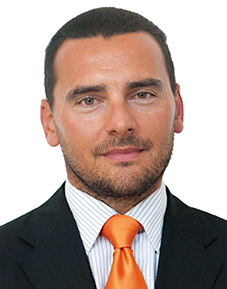The rehabilitation of edentulous jaws with tightened implant-supported immediate loaded prosthesis has become recently, a method of routine use. The possibility to bypass the anatomical limits (jaw sinus, lower alveolar nerve) using tilted implants with specific angled abutments (M.U.A.or P.A.D.) has expanded the use of these kind of immediate loading rehabilitations even in the athrophic maxilla, decreasing the need to apply the additional reconstructive bone surgeries (sinus lifts, GBR, grafts) with the consistent reduction of the times, costs and the post-operative morbidity for our patients.
The accurate pre-operative study of the case and the use of surgical guides always more reliable and accurate made these techniques safe and reliable also in less experienced hands. The key elements for a clinical success of these rehabilitations are the accurate pre-operative study of the case, the underpreparation
of the implant site and the high consequent torque of the implant insertion that ideally should not be less than 45 Ncm. After many years and numerous successful rehabilitated cases using the Simple technique in combination with the submerged traditional implants, we have concluded that the use of new Prama transgingival implants for immediate loading screw retained rehabilitations has considerable advantages compared to the submerged classical implants:
- Possibility to submerge part of the machined neck of the Prama implant under the residual bone crest in the immediate post-extraction sockets (in prevision of future bone manipulations), without the need to position the implant-post margin too subgingival;
- Transgingival emergence of the implant neck, eliminating therefore the need to use intermediate posts and reducing the discomfort for the patient because of the subgingival work during the delicate phase of placing the temporary prosthesis with immediate loading; on the straight implants the temporary Simple posts are directly used;
- It is possible to avoid modelling the distal bone with drills and trimmers for the angled implants by means of inserting the distal margin of the implant neck at the crest level and leaving supracrestal the mesial margin of the same, with significant time and excellent bone tissue saving, preventing the formation of “bowl shaped” distal defects to the tilted implants;
- Possibility, once the gingiva is healed, to compensate for any gingival retractions enhancing with the permanent prosthesis on the Prama neck implant.


